In the course of just one week (or even a day!), it is possible to come across thousands of items you could potentially resell on Amazon. Obviously, not all of those items are going to make the cut and end up in your shopping cart. Some items are a no-brainer purchase. Some are definitely NOT something you should buy for resale. And some items are kind of iffy – should you buy it or not?
How do you know whether to buy an item or just pass and move on to the next item?
For the rest of this article, I want to talk with you about how to find profitable inventory to sell on Amazon – more specifically, I want to show you my thought process when I’m deciding whether or not to buy an item.
First things first: I want to make sure you are using the right tools when you are sourcing via retail arbitrage, online arbitrage, and/or wholesale sourcing.
Retail arbitrage (RA) sourcing
 When doing RA, I always use the Scoutify app on my smart phone to scan inventory and see all the necessary numbers to make a smart sourcing decision:
When doing RA, I always use the Scoutify app on my smart phone to scan inventory and see all the necessary numbers to make a smart sourcing decision:
- Sales rank
- Price
- Fees
- Profit
- Number of competitors
- Historical sales rank and pricing
Some sellers choose to use only the Amazon Seller app for doing RA, but I have found the info it returns to be incomplete. I prefer to have more information at my fingertips when I make a sourcing decision, so I use the Scoutify app that comes bundled with the listing software Inventory Lab.
Online Arbitrage (OA) or Wholesale Sourcing
Now, when I’m doing OA or wholesale sourcing, I always use the tool RevSeller to help me see and understand the necessary numbers to make a smart sourcing decision.
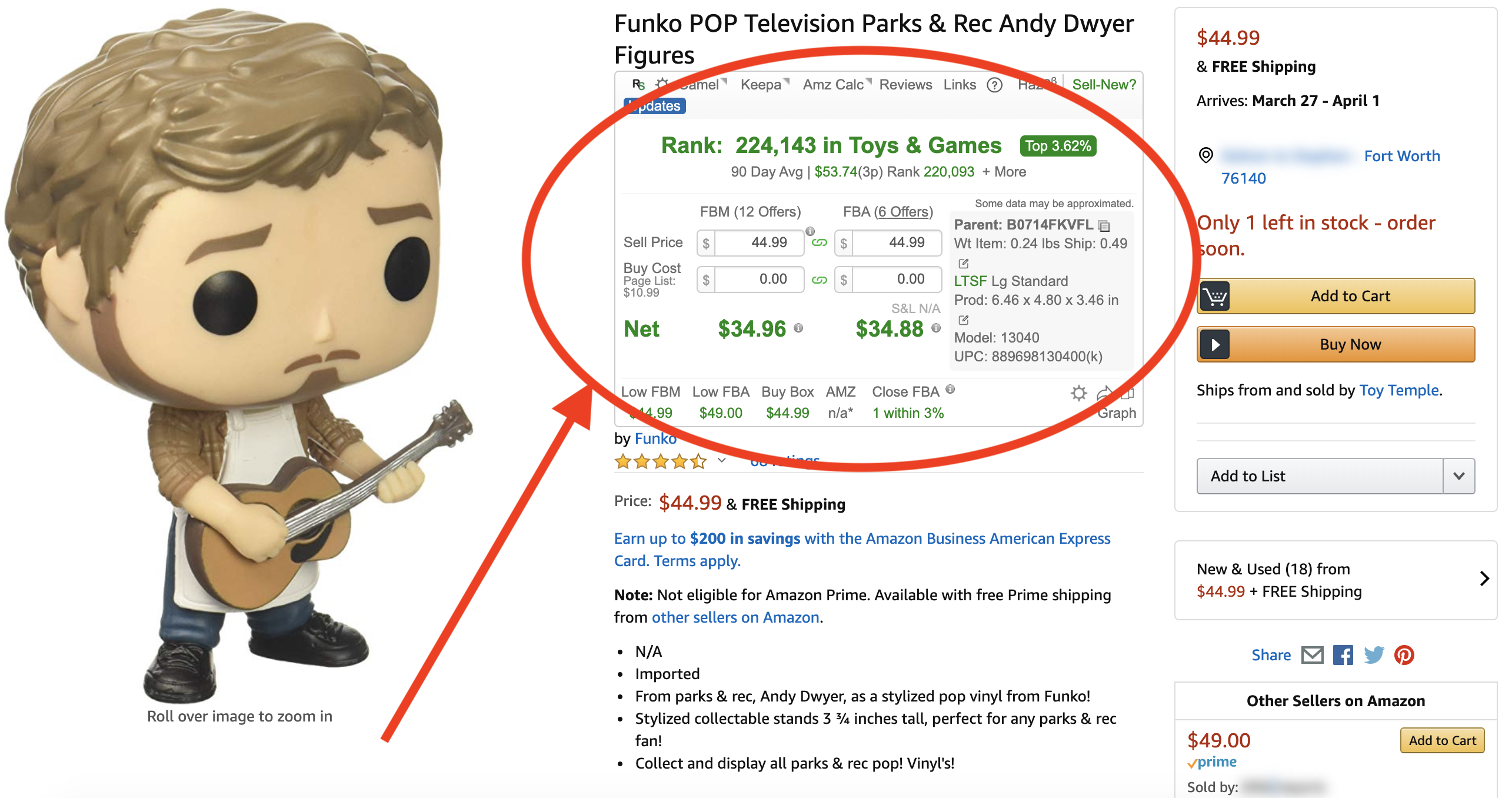 RevSeller allows me to see crucial information directly on the Amazon product page. Once you install the RevSeller extension, you will see a box below the Amazon product title like the image to the right. The extension shows you the following information:
RevSeller allows me to see crucial information directly on the Amazon product page. Once you install the RevSeller extension, you will see a box below the Amazon product title like the image to the right. The extension shows you the following information:
- Real-time calculator (similar to what is covered on the FBA Calculator web page)
- Sales rank and percentage (more conveniently located at the top of the product page)
- 90-day averages for price and sales rank
- Number of offers from other sellers
- Variation viewer
- One-click restriction checker
- And more
RevSeller is a very useful app that can help you in multiple ways. Click here to get a free trial to see for yourself. If you decide to sign up for RevSeller, be sure to use the coupon code FULLTIME so you can save $20 off your first year.
OK, now that we have that covered, let’s look at my thought process when I’m making a sourcing decision. This process works whether you are doing RA, OA, wholesale purchasing, or any other type of sourcing for Amazon FBA.
I typically ask myself 4 main questions when I’m making a sourcing decision:
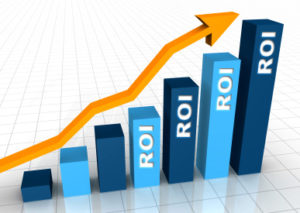 1. Will I make a profit? (What is the ROI?)
1. Will I make a profit? (What is the ROI?)
We’re all in this business to make money, so we want to make sure the items we’re sourcing have a good ROI, or return on investment. When you are first starting out at Amazon FBA, I recommend finding items that have a 100% ROI. If you have a higher percentage ROI, you have a lot more wiggle room to make some mistakes and adjust your price if necessary.
As you gain more experience and confidence, you can begin sourcing items that have a lower ROI. Some sellers stick with 75% and above, while others stick with 50% or above. If you find an item that will sell very quickly, you can even go as low as 30% ROI. The main point here is to find items that have a good ROI, whatever the parameter is that you’ve set. If you can’t make money on your investment, you want to move on and look for different inventory items.
 2. Can I sell it? (Am I approved to sell the item?)
2. Can I sell it? (Am I approved to sell the item?)
Some categories are gated for certain sellers, and some brands are restricted to sellers. The second thing I look at when I’m making a sourcing decision is whether or not I am approved to sell an item. If I can’t sell it, there’s no point in continuing to consider it. You can see whether or not you are approved to sell an item from within the Amazon Seller app, but Scoutify also has a link to show you whether or not you are restricted for the item. Here is more about understanding Amazon restrictions and how to get approved.
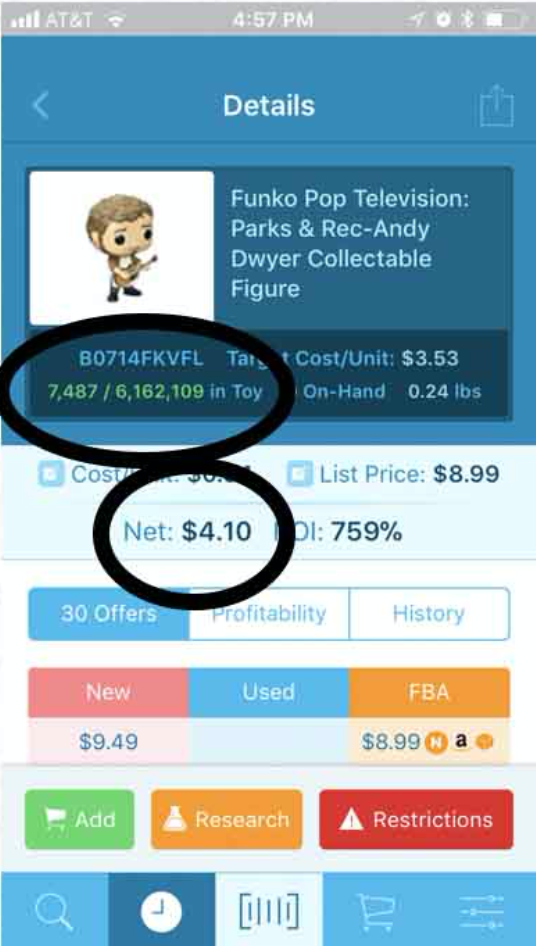 3. How fast can I expect it to sell? (What is the sales rank history?)
3. How fast can I expect it to sell? (What is the sales rank history?)
The sales rank of an item is how I can tell whether or not the item will sell quickly on Amazon. Amazon tells us the current sales rank of every item in their catalog, and we can see that information when we scan an item with a sourcing app. You want to make sure, though, that you are considering the average sales rank when you make a sourcing decision, not just the current sales rank.
Amazon updates sales rank frequently throughout the day, so you need to know how much that sales rank varies over time. You can look at graphs on Keepa to figure out the average sales rank in a glance. You can easily add a Keepa quick links to the Scoutify sourcing app (here’s how). I recommend checking out an Amazon sales rank chart to make sure you know what is a low or high sales rank for the category of the item you are looking at.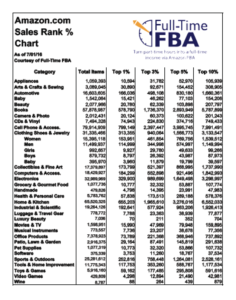
Our blog offers a free Amazon category sales rank chart for subscribers. You can use the chart to see if an item’s average sales rank falls in the top 1%, 3%, 5%, 10%, or higher for its category.
If you’re interested in learning more about sales rank, we offer an affordable mini-course called The Reseller’s Guide to Sales Rank: Understanding Amazon Best Sellers Rank for Maximum Profits. I’ve included in the mini-course everything I know about sales rank to help you get started with making smarter sourcing decisions.
I make my sourcing decision based on how high or low the sales rank of the item is. If an item has a low average sales rank, it is a faster selling item. If the average sales rank is high, the item will sell more slowly.
 4. What is the competition level? (Is there too much competition even if priced competitively?)
4. What is the competition level? (Is there too much competition even if priced competitively?)
Unless no one else is selling a particular item, you are going to have competition if you sell that item. There are two main competitors you need to consider: Amazon and other third-party sellers. When it comes to competing with Amazon, I generally choose not to buy items that Amazon sells. I always look to see if Amazon is in stock on an item or has been in stock recently. If so, I typically pass on that item unless I can price it significantly lower than Amazon.As a general rule, Amazon does not tend to share the buy box, and since the buy box is where over 70% of Amazon sales come from, I don’t want to risk buying inventory where I will never have a chance to get that buy box. To see the history of Amazon being in stock or out of stock on an item, I check the Keepa graph for the item through the Scoutify app.
I also like to look at the other third-party sellers who are priced competitively on the item. I’m only interested in those sellers who are priced within 1% or 2% of the buy box price. Anyone priced higher than that isn’t truly going to be my competition.I want to make sure there’s a relatively low number of sellers priced competitively, so that I can be assured of getting time in the buy box. The higher the sales rank, the fewer competitors I want on the item. If the sales rank is lower, I am more willing to tolerate a relatively higher number of competitors – with a low sales rank, the item will be selling fast enough that I can still get time in the buy box and make my sales.
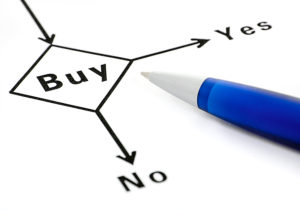
Those are my four main deciding factors when I am making a buying decision for my Amazon FBA business. As with anything, there are some exceptions that come up when I’m looking at this criteria. The more comfortable you are with your experience at making these decisions, the more you will be able to see when there are exceptions to the buying parameters you set up for yourself.
There are other less important factors I sometimes consider, as well, such as number of reviews and whether or not they are positive. I tend to use other factors in my decisions when I’m on the fence about a buy.
Do you use similar buying criteria as the ones I’ve covered above? Is there anything else you absolutely must look at before making a buy for your FBA business? We would love to hear your ideas in the comments!
*Post updated for 2023
![]()
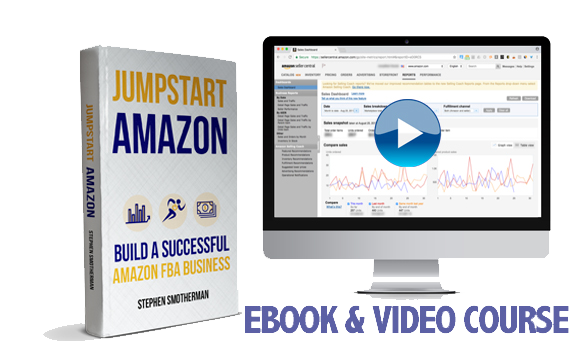 JumpStart Amazon Course
JumpStart Amazon Course
Build a Successful Amazon FBA Business
Enrollment closes in only:
By now you know that running a successful Amazon business takes hard work, but you also want to be sure you spend your time focusing on Amazon FBA strategies that are actually proven to provide the results you’re looking for. If you’re ready to finally get serious about your Amazon FBA business, then I invite you to check out JumpStart Amazon: Build a Successful Amazon FBA Business.
JumpStart Amazon is a combination video course and ebook. The ebook is over 220 pages filled with the content and graphics you need to start a successful Amazon business from scratch. The video course features 5 main sections, 19 content-packed modules, and over 40 videos adding up to over 10 and a half hours of video training. This training is set up to help you build a solid foundation and then know how to find growth and success on top of the basics. This course is packed with more results-focused knowledge than any other ebook out there centered around starting an Amazon business. Find out more about JumpStart Amazon today.
Use the code SAVE100 at checkout to take $100 off the cost of the course today! But hurry because enrollment for the course closes down in only:
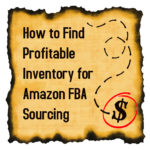
Very helpful thank you so much!
Very nice and informative article. Because I’m doing only OA, is there any other rule or rules I must follow in the addition of your 4 basic rules?
Thank you
Mpampis
The only other thing I can thing of right now is to just work in the lead time to get your items delivered into the equation. With RA, I can send items in very quickly and know that my items will be priced competitively – but with OA, I know I’ll need to wait about a week or so longer and that might impact my buying decisions a little bit knowing that the prices might be different than from when I first bought the item. But that would be a step 5 in my list and not hold as much weight as the first 4 steps.
For me, this time is almost 2 and 1/2 weeks. I use a prep center for my FBA cause i’m living in Greece. The most of the time, this huge delay impact my business but there not anything I can to do about it. Anyway, thank you very much for the reply.
Hello have you considered using something like Jungle scout, asinspector, terapeke ,or unicorn smasher are they even worth it to look for products that will sell
I. too, would like to know this answre. I, considering signing up with BrickSeek.
I like using BrickSeek to find products locally. Get it here: https://www.fulltimefba.com/brickseek
I also will carefully consider items that have a very high rank with no sellers. These are items that are currently unavailable and I can choose my asking price as there is no competition. I check keepa to make sure they have sold in the past, and I frequently make a great ROI on these items.
Quick question on rank. I often find items where the rank shows that potential sales are <5 per month on jungle scout, but in the top 1%-3% on your chart, which should yield WAY more than 5 sales. Which is correct? Who do we trust, you or jungle scout? Thanks.
Dwight, I’ve seen this same discrepancy!
Makes it difficult to trust anyone’s data, right?
I don’t use Jungle Scout, so I can’t say anything about the accuracy… but the important number to look at is not today’s sales rank – but the average sales rank of the item over time. Sales rank changes 24 times a day… so it can be all over the place. Getting the average sales rank is the key to understanding that item’s sales velocity. I use Keepa to understand what the average sales rank is… Here is a free video training on how to use Keepa: https://www.fulltimefba.com/readkeepa
Thanks. So, to clarify, your monthly chart is based on Keepa average or just a one day snapshot of when you get the data? <5 sales a month is a HUGE difference from something in the 1% range.
I would find the average sales rank of an item and then use the average sales rank with the Jungle Scout estimator. The top 1% of a category could still mean 100 sales a day or 50 sales a day… depending on the category and time of year.
Thanks for all this info. Very helpful for new sellers. Question about Amazon warehouse deals. Do you avoid those items as you would Amazon? Maybe they don’t have as many of the product?
I ignore AZ warehouse deals.
WHAT ABOUT PROFIT BANDIT?
Profit Bandit is ok… but you can’t get all the Keepa data with Profit Bandit like you can with Scoutify.
Hi Stephen,
Is there anything additional in the Sales Rank mini-course that’s not covered in the How to Keepa Camel course?
Thanks,
Alex
I would say that there is only a small amount of info that’s in the sales rank mini-course that is not covered in the How to Keepa Camel course. Here are the topics not covered in Keepa Camel that are covered in the Sales Rank mini-course:
My Sales Rank Comfort Zones for Sourcing Profitable Inventory
How to Source with the Sales Rank Chart
Understanding Sales Rank in the Clothing, Shoes & Jewelry Category
Sales Ranks for Parent/Child ASINs
Plus a few other nuggets of info. I hope this helps!
Thanks for the response – much appreciated.
Hi Stephen,
I’m a bit confused by the ROI limit you’ve suggested. I have been doing OA exclusively for about 1.5 months and so far it has been going well. However, I have yet to find more than 1 or 2 items that I could flip for 100% ROI. Most my purchases are in the 30 – 50% expected ROI range.
I know you can’t share your sources, but this is eating me up, like “where is he finding 100%? I’d have made 2 trades in a month at my rate if I limited at 100% ROI.
I source exclusively online and I tend to pick up a lot of online doorbusters, deal of days, flash sales, clearance, etc. Is there something I’m missing here??
Thank you so much for any help, Stephen! You have an incredibly helpful site!
I agree with Josh I never find products with ROI’s above 30% (after calculating in fees, shipping,taxes). What are we doing wrong Stephen?
Keep looking. Keep scanning. Keep sourcing. Plus… 30% ROI is still ROI! So even there is not as much wiggle room in regards to price, they can still be profitable.
When doing RA, what do you tell the cashier when they ask why you are buying 20 pairs of shirts or shoes in different sizes?
99% of cashiers never ask me… when they do, I answer something like, “Oh, I know some people who would love these items.” Sometimes I just leave out that they are Amazon customers who will get them… other times I will tell the cashier the whole truth. It’s not against the law (although stores like Target and Kohl’s don’t like to sell to resellers).
I don’t see Keepa listed as a research choice on scoutify anymore, I think they took it off at some point right?
They did – and you can put it back in Scoutify with these instructions: https://www.fulltimefba.com/addkeepa
Worrisome THC tinctures has been totally the journey. As someone pointed on spontaneous remedies, delving into the coterie of hemp has been eye-opening. From THC tinctures to hemp seeds and protein puissance, I’ve explored a brand of goods. Regard for the confusion surrounding hemp, researching and consulting experts tease helped pilot this burgeoning field. Entire, my experience with hemp has been optimistic, gift holistic well-being solutions and sustainable choices.